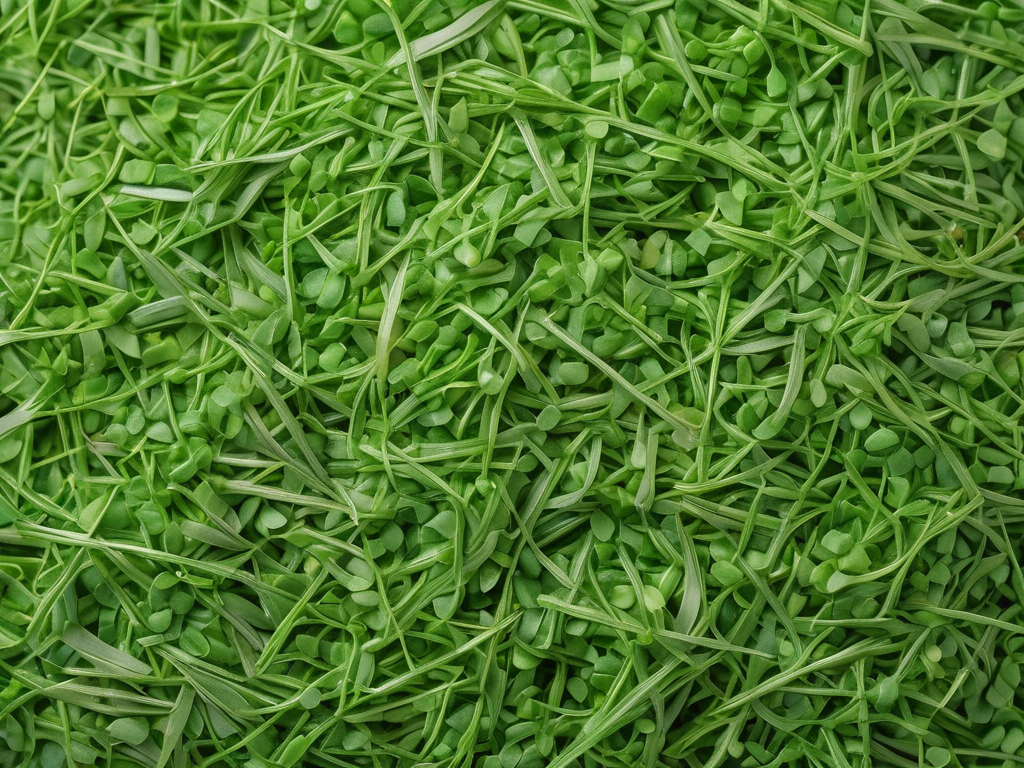
Tips for Preserving Alfalfa in the Pantry
Get Your Free Food Safety Cheat Sheet
30 most common foods with instant answers. Print it and stick it on your fridge—completely free!
Tips for Preserving Alfalfa in the Pantry
Alfalfa, a highly nutritious and versatile herb, is a staple ingredient in many cuisines worldwide. Known for its delicate flavor and numerous health benefits, alfalfa is commonly used in salads, sandwiches, and smoothies. To ensure the freshness and quality of alfalfa in your pantry, proper storage is crucial. In this blog post, we will discuss some effective tips for preserving alfalfa in the pantry, keeping it fresh and flavorful for an extended period. (Alfalfa)
Understanding the Importance of Proper Storage
Proper storage of alfalfa is essential to maintain its freshness, flavor, and nutritional value. When stored incorrectly, alfalfa can wilt, lose its vibrant green color, and develop a bitter taste. To prevent spoilage and ensure that your alfalfa remains fresh, follow these practical tips for pantry storage.
Selecting Fresh Alfalfa
Before storing alfalfa in the pantry, it is essential to start with fresh, high-quality herbs. Look for alfalfa that is bright green, crisp, and free of any signs of wilting or yellowing. Avoid purchasing alfalfa that appears wilted or has a slimy texture, as these are indicators of spoilage.
Cleaning and Drying
- Gently rinse the alfalfa under cold running water to remove any dirt or debris.
- Pat the alfalfa dry with paper towels or a clean kitchen towel to remove excess moisture.
- Allow the alfalfa to air dry for a few minutes before storing it in the pantry.
Proper Storage Containers
- Perforated Plastic Bags: Place the cleaned and dried alfalfa in perforated plastic bags to allow for air circulation. Avoid sealing the bags tightly, as this can cause moisture buildup and accelerate spoilage.
- Glass Jars: Alternatively, store alfalfa in glass jars with airtight lids. Ensure that the jars are clean and dry before adding the herbs.
- Produce Bags: Use breathable produce bags to store alfalfa, allowing for proper air circulation while protecting the herbs from light exposure.
Ideal Pantry Conditions
- Cool and Dry Environment: Store alfalfa in a cool, dry pantry away from direct sunlight and heat sources. Avoid storing alfalfa near appliances that generate heat, such as ovens or stoves.
- Consistent Temperature: Maintain a consistent temperature in the pantry to prevent fluctuations that can impact the freshness of the herbs.
- Avoid Refrigeration: While refrigeration can extend the shelf life of some herbs, alfalfa is best stored at room temperature to prevent moisture buildup and wilting.
Monitoring and Rotation
- Check for Spoilage: Periodically inspect the alfalfa for any signs of spoilage, such as wilting, discoloration, or a foul odor. Discard any herbs that show signs of deterioration.
- Rotate Stock: Use the oldest alfalfa first to ensure that your herbs remain fresh and flavorful. Rotate your stock regularly to prevent herbs from sitting unused for an extended period.
Safety Tips for Preserving Alfalfa
When storing alfalfa in the pantry, it is essential to follow food safety guidelines to prevent contamination and ensure the herbs remain safe for consumption. Consider the following safety tips when preserving alfalfa:
Proper Hygiene Practices
- Wash Hands: Before handling alfalfa, wash your hands thoroughly with soap and water to prevent the transfer of bacteria or contaminants.
- Clean Preparation Surfaces: Ensure that all utensils, cutting boards, and countertops are clean and sanitized before working with alfalfa.
Cross-Contamination Prevention
- Separate Raw Foods: Store alfalfa away from raw meats, poultry, and seafood to prevent cross-contamination.
- Use Separate Cutting Boards: Use separate cutting boards for herbs and other food items to avoid cross-contamination during meal preparation.
Labeling and Dating
- Label Containers: Clearly label containers or bags of alfalfa with the date of purchase to track freshness and rotation.
- Follow First In, First Out (FIFO): Implement a FIFO system to use the oldest alfalfa first and prevent herbs from expiring before use.
Proper Handling and Storage
- Avoid Overcrowding: Do not overcrowd the storage containers with alfalfa, as this can lead to bruising and spoilage.
- Do Not Crush: Handle the alfalfa gently to prevent crushing or bruising, which can accelerate deterioration.
Conclusion
By following these tips for preserving alfalfa in the pantry, you can extend the shelf life of this nutritious herb and enjoy its fresh flavor in your culinary creations. Remember to select fresh alfalfa, clean and dry the herbs properly, choose suitable storage containers, and maintain ideal pantry conditions. Additionally, prioritize food safety by practicing proper hygiene, preventing cross-contamination, labeling and dating containers, and handling alfalfa with care. With these guidelines in mind, you can ensure that your pantry is stocked with high-quality alfalfa for your cooking and snacking needs.
For more information on alfalfa and other food preservation tips, visit alfalfa. Happy cooking! (Alfalfa)
Related Posts
Here are some other articles you might find helpful:
Authoritative Food Safety References
These agencies and university labs inform every tip and health precaution we publish.
USDA FoodKeeper – Cold Storage Guidelines
Official refrigerator, freezer, and pantry timelines maintained by the U.S. Department of Agriculture.
Visit USDA FoodKeeperFDA Produce Safety Rule & Grower Guidance
Field-to-fridge handling practices that prevent contamination of fruits, vegetables, and leafy greens.
Visit FDA Produce SafetyCDC Foodborne Illness Prevention Hub
Surveillance-backed guidance on pathogens, symptoms, and steps to reduce foodborne illness risk.
Visit CDC Food SafetyUC Davis Postharvest Technology Center
University research detailing optimal storage atmospheres for produce after harvest.
Visit UC Davis PostharvestPenn State Extension – Home Food Preservation & Safety
Peer-reviewed extension bulletins on safe canning, chilling, and reheating practices.
Visit Penn State ExtensionGet Your Free Food Safety Cheat Sheet
30 most common foods with instant answers. Print it and stick it on your fridge—completely free! Want more? Upgrade to the complete guide with 70+ foods.
Scan your food directly and get instant safety info using our AI-powered camera feature.